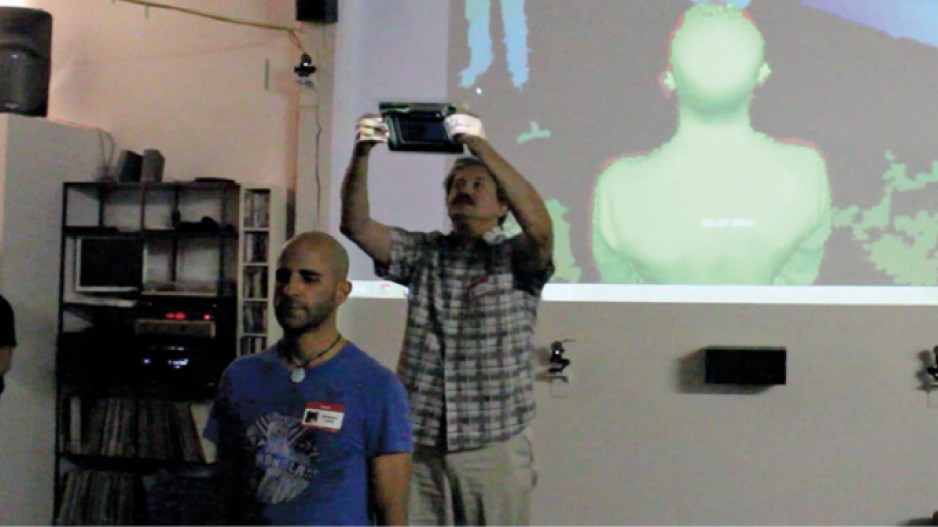Aaron Hilton believes in the potential of virtual reality (VR).
With his company Conquer Mobile, he's been developing mobile apps for almost seven years, and in December he announced the development of a virtual-reality medical training simulation taking advantage of the ubiquitous VR headset Oculus Rift.
Hilton has now teamed up with a group of digital artists who operate The Sawmill, a digital art workspace in south Vancouver, to make it easier for digital designers to experiment with the possibilities of virtual reality.
The Sawmill recently hosted a VanVR Meetup event to showcase its capabilities and the new technologies being developed within.
Hilton said The Sawmill is unique because it's a motion capture space.
The room is equipped with a 3D projection system, sound system, sound recording capabilities, physical workshops and digital equipment.
“The neat thing about this space is that it lets you come in and try on virtual reality. If you're an architect, try it with a building, or try it with a medical simulation.”
Hilton is also using The Sawmill as a test bed for Conquer Mobile's medical simulation technology and considers it a “quantum leap” above the company's previous VR environment, mainly because of the breadth of innovative technology being developed in the space using devices such as a “structure sensor.”
The custom VR camera creates a highly detailed 3D model of any structure in seconds that can then be instantly integrated into a virtual-reality environment.
David Clement developed the structure sensor to address the space and cost requirements for motion capture (mocap).
“Once we have the mocap information, we can scan a large object at great detail because when we move, we know exactly where the structure sensor is in three-dimensional space,” Clement said. “So we should be able to scan every detail of the room to an extraordinarily high level of precision.”
Alastair Macleod, a motion capture specialist who helped demonstrate the device at the June 23 VanVR Meetup event, said the mocap system costs less than some people pay for their hi-fi systems.
“This isn't a hundreds-of-thousands-of-dollars system. This is tens of thousands of dollars. And five years from now, this is going to be a thousands-of-dollars system. Twenty years from now it's going to be a hundreds-of-dollars system, and you're going to be able to buy it at Best Buy. So what you're seeing here is definitely the future.”
Also on display were several virtual-reality projects created by local developers, including Jesse Joudrey's VR Chat, which allows users to chat while walking around a virtual space and communicating with virtual avatars, and Vaugham Hong's uForis VR multimedia XML page browser.
Virtual reality is still new technology. Consumer products like the Oculus Rift and Sony's (NYE:SNE) Morpheus headset are still months, if not years, away from release. But with increased interest for virtual reality to be used in professional products like Conquer Mobile's medical applications, and with big purchases like Facebook's (Nasdaq:FB) $2 billion acquisition of Oculus VR, Hilton is hoping that The Sawmill will provide a venue for continued innovation breakthroughs.




